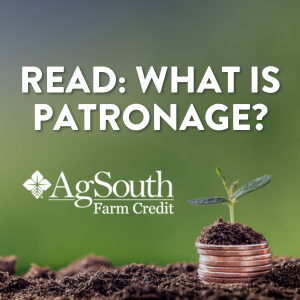Sharing profits with our members
As a cooperative, AgSouth is owned by our members. One of the most important financial benefits is sharing in the profits of the Association through our Patronage program. Patronage reduces the cost of borrowing by returning a portion of our net income to our borrowers based on the proportion of interest paid on their loan and total interest earned by the Association.
